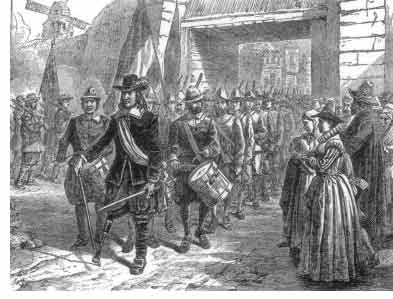 History of Holland
History of HollandHistory of Netherlands
Amsterdam Holland
Netherlands cities
Tulips of Holland
Dutch painters
Dutch writers and scientists
Dutch paintings
Famous Dutch people
Dutch history
Dutch folk tales
Rembrandt and the Nightwatch
Holland history
Holland on sea history
Pictures of Holland
Dutch architecture
Holland facts
New Amsterdam history (New York)
First traders on the island of Manhattan
Peter Minuit
Walter van Twiller second of the Dutch govenors in New Amsterdam
Willem Kieft
Peter Stuyvesant the last of the Dutch governors in New Amsterdam
New Amsterdam became New York<
Useful information
New Amsterdam became New York
 So now the conquered province had come into the possession of the Duke of York, and Colonel Richard Nicolls, who was in command of the English soldiers, took charge. This first English Governor appeared anxious to make all the people his friends. He made Thomas Willett Mayor, and Willett being very popular, all the citizens rejoiced, and said the new Governor was a fine man.
So now the conquered province had come into the possession of the Duke of York, and Colonel Richard Nicolls, who was in command of the English soldiers, took charge. This first English Governor appeared anxious to make all the people his friends. He made Thomas Willett Mayor, and Willett being very popular, all the citizens rejoiced, and said the new Governor was a fine man.During three years Colonel Nicolls humored the people so much that they were well satisfied. At the end of that time he had grown tired of the new country, and asked to be relieved. The people were really sorry when he returned to England and Francis Lovelace took his place.
Governor Lovelace did not get along so well. He was a man of harsh manner, who did not have the patience or the inclination to flatter with fine promises. Lovelace wanted everyone to understand that he was master. Very soon, when the people said they thought they should have the right to control their own affairs, the Governor told them that he did not think it was best for them to have too much to do with the governing of the city.
But he did some things that pleased the people. For one thing, he brought about the custom of having merchants meet once a week at a bridge which crossed Broad Street at the present Exchange Place. There is no bridge there now, but in those days it was necessary, for Broad Street was a ditch which extended from the river almost to Wall Street. But though the ditch has been filled up, and the bridge is gone, the locality has ever since been one where merchants have gathered.
The Governor also had a messenger make regular trips to Boston with letters, which was the first mail route from the city. Matters were going along nicely when trouble arose between England and Holland again. Then the Dutch decided that it would be a good time to get back their lost province of New Netherland. The English in New York heard of this, and made all sorts of warlike preparations. But the Dutch were so long in coming that the preparations for war were given up. Finally the Dutch ships did arrive unexpectedly, sailing up the bay one morning in the month of July, in the year 1673. Governor Lovelace was in a distant part of the colony, and the city had been left under the care of Captain John Manning.
Manning was in despair. He knew full well that there was no hope of defending the city successfully. He sent a messenger dashing off to the Governor, and he sent another to the Dutch ships to ask what they were doing in the bay, just as though he did not know. The Dutch sent word back that the city must be surrendered to them that same day. And to show they meant what was said, the Dutch admiral despatched one of his captains, Anthony Colve by name, who landed with 600 men. The Dutch captain agreed that if the English left the fort without a show of resistance, they could do so with the honors of war and without interference. Then he and his soldiers tramped down the road that is now Broadway. The English marched out of the fort, and the Dutch marched in; just as nine years before the Dutch had marched out and the English had marched in.
When the King in England heard that New York had been so easily captured, all the blame was placed on Captain Manning, and after a time you will see what became of him. Captain Colve took charge of the reconquered province. He began industriously to undo all that the English had done. The province was again named New Netherland. The city was called New Orange, in honor of the Prince of Orange - the prince of Holland, who in a few years was to marry a daughter of the Duke of York, and who in a few more years was to be King of England under the title of William III.
Captain Colve put the fort in good condition, repaired the city wall, made a soldier of every man and drilled them every day. He had the city gates locked at night, and put a guard at them to see that no one came in or passed out.
In less than a year, when the city was in shape to be defended, the English and the Dutch made up their quarrel. The province of New Netherland was returned to the English, and became again the province of New York, and the Dutch soldiers left the Island of Manhattan, never again to return to it in warlike array.

